The US Supreme Court’s latest photo shows how radically Americans’ idea of dignity has changed
Smiling in photos was historically frowned upon, but now even US Supreme Court justices are grinning.
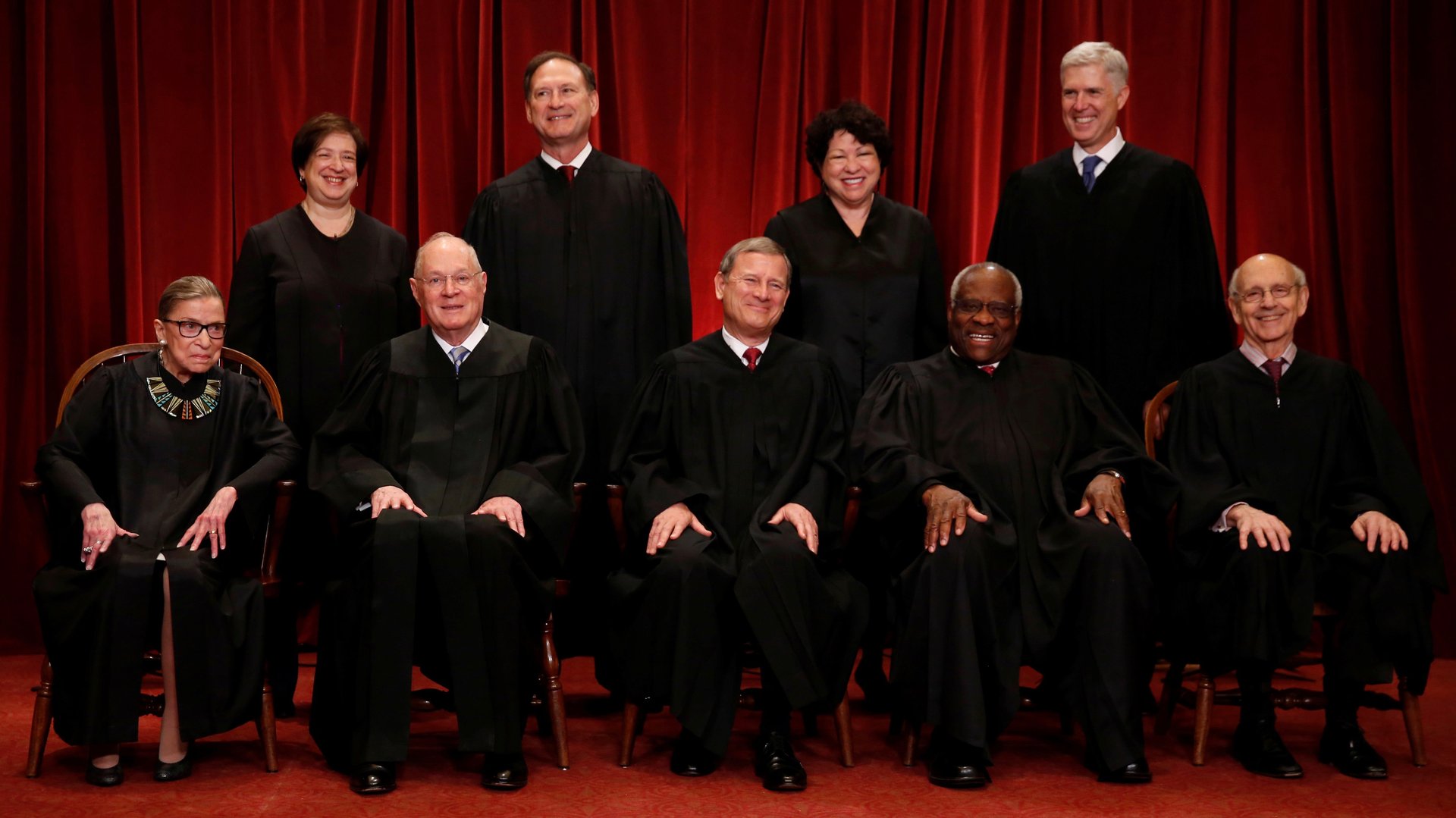

Smiling in photos was historically frowned upon, but now even US Supreme Court justices are grinning.
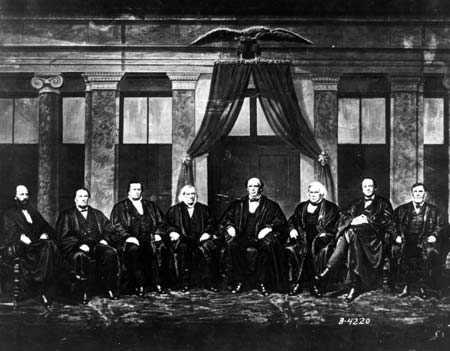
In the Supreme Court’s latest court photos, taken on June 1, justices of the 2017 class mostly display exuberant good cheer. Only justices Anthony Kennedy and Ruth Bader Ginsburg appear neutral (though perhaps they are nonetheless trying to smile). The group photo was taken to immortalize the court’s full team, after a year of only eight. The newest ninth member, Neil Gorsuch, replaced the late Antonin Scalia in April.
The junior justice understandably looks thrilled by his first official high court photo shoot. Perhaps Gorsuch’s glee was infectious as the rest of his row—Elena Kagan, Samuel Alito, and Sonia Sotomayor—seem psyched too. Meanwhile, just below Gorsuch, Stephen Breyer and Clarence Thomas are practically laughing. Chief Justice John Roberts in the center bottom row is smiling too, but unlike the rest, the expression relies mostly on the lift of his face and crinkled eyes, not a toothy grin. Despite their solemn duties and a busy month ahead, members of the bench appear delighted.

That’s a change from the serious old days: Compare this year’s photo to the half-smiling group of justices in the 1998 Supreme Court photo, or the somber countenances of 1869 and 1925.
The classic explanation for severity in old photos is that cameras took so long to shoot holding a smile wouldn’t have made sense. “Victorian families wishing to appear happy simply posed in front of the family property,” explains historian Christina Kotchemidova. She adds that in those times, smiling was associated with peasants, drunkards and fools.
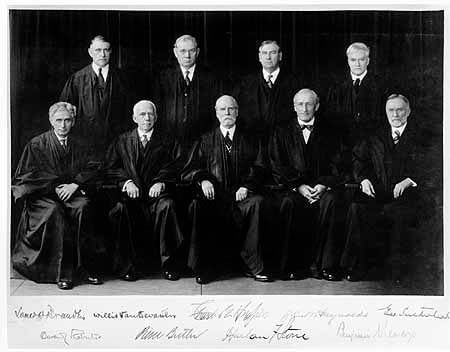
According to historian Robert Leggat, smiling was so discouraged in the 19th century that photographer Richard Beard legendarily instructed subjects to say “prunes” to maintain a prim expression.
“I think a photograph is a most important document, and there is nothing more damning to go down to posterity than a silly, foolish smile caught and fixed forever,” says humorist Mark Twain to biographer Elizabeth Wallace in her 1913 book Mark Twain and the Happy Island.
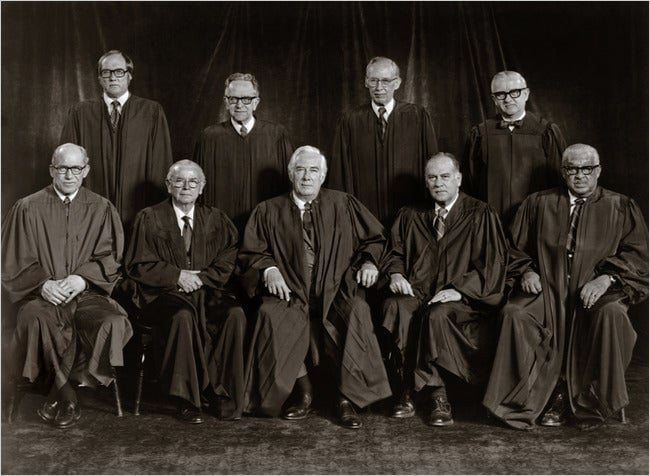
Kotchemidova, who examined the American shift from circumspection to happiness in a 2005 essay, Why We Say Cheese, also finds social reasons for our shift to smiles: Increased apparent happiness in photos reflected transforming notions of beauty, etiquette and attitude; business interests; and new media, she says, and revealed the increased influence of advertising in American life.
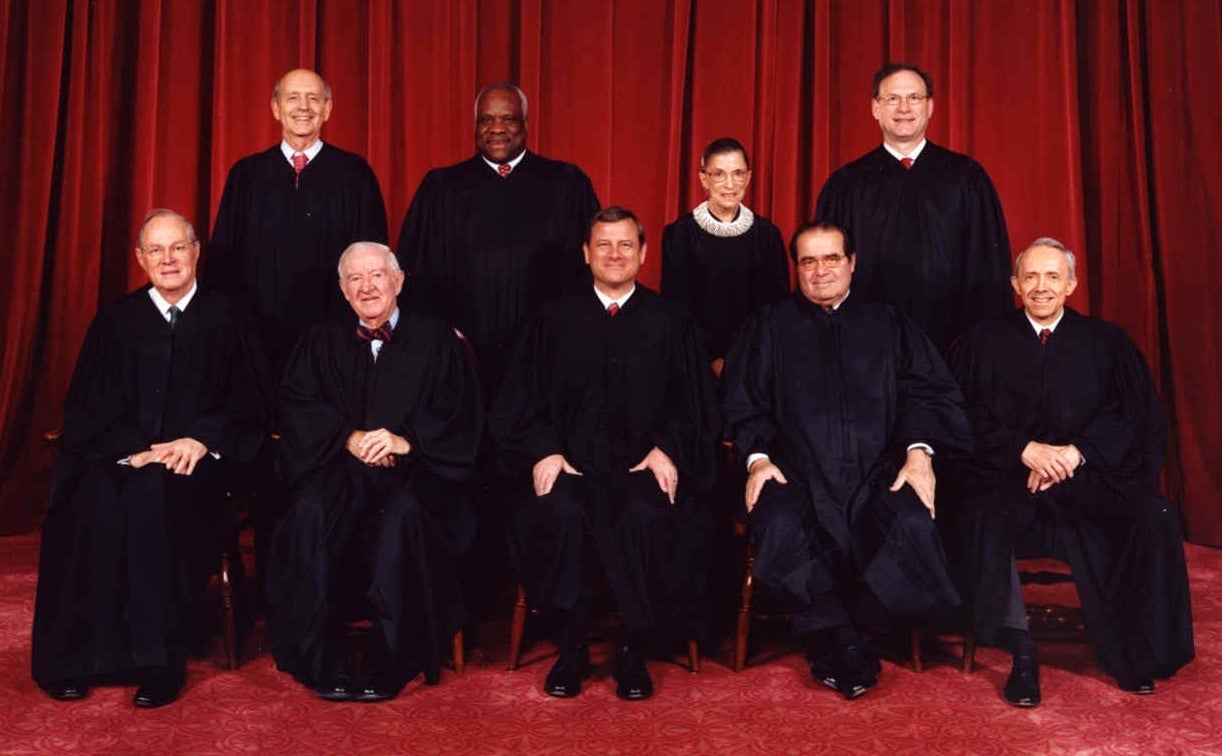
Kodak ads from 1908 show models smiling, in what Kotchemidova believes was a campaign by the New Jersey company to popularize photography and transform it into a fun pastime. Showing teeth took off in the general public after World War II, according to a 2015 study of 37,000 American yearbook photos from 1905 to 2013. Today, the smile has ascended, and an intense, serious expression risks seeming pretentious.
The 2017 class of US Supreme Court justices faces legal issues just as grave and complex as in previous years, and June is traditionally an intense month of issuing opinions before the end of the court’s spring term. It remains to be seen whether the grins remain through the weeks of work ahead.